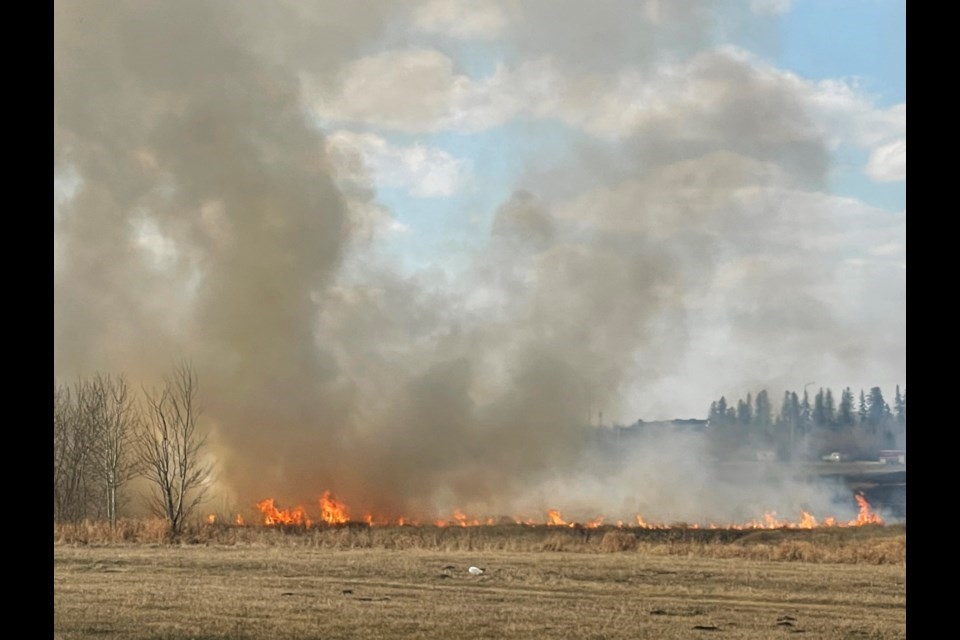Update
This story was updated May 17 with additional information.
St. Albert students scaled back on their outdoor activities this week in response to wildfire smoke – smoke a Calgary surgeon says will become more common if Alberta doesn’t address global heating.
Environment Canada issued a special air quality statement for the Edmonton, St. Albert, and Sherwood Park region at about 6 a.m. Wednesday May 17.
The statement followed on a similar one issued for that region plus most of Sturgeon County the previous day, and came as St. Albert residents woke up to see a thick haze of smoke outside their windows.
The cause of both warnings was smoke from the roughly 92 wildfires raging throughout the province as of Wednesday morning.
The smoke caused the air quality health index (AQHI) in St. Albert to reach 10+ (very high risk) Wednesday, up from about 7 (high risk) the day before.
Environment Canada says at-risk populations such as children, seniors, people with heart or lung disease, and pregnant people should avoid strenuous outdoor activities when the AQHI hits 10+. People in general should also reduce or reschedule strenuous outdoor activities under these conditions, especially if they experience symptoms such as coughing and throat irritation.
St. Albert Public spokesperson Paula Power said her district cancelled a track meet Wednesday in response to the smoke, and had asked schools to have backup plans for any outdoor activities in the next few weeks. GSACRD spokesperson Shanlyn Cunningham said her district advises schools to keep students indoors whenever the AQHI reaches 8 or more, and has asked schools to limit their outdoor activities until air conditions improve.
Calgary emergency room surgeon Dr. Joe Vipond called this week’s air conditions “pretty dangerous,” as they could cause serious short-term and long-term health effects.
“It’s really worthwhile to try and avoid this type of pollution.”
Vipond said the main pollutant of concern in wildfire smoke is fine particulate matter (PM2.5), which can cause coughing, headaches, eye irritation, heart attacks, and strokes. Anyone who had concerns about these or other smoke-related symptoms should head to their nearest emergency room immediately.
Stop the smoke
Vipond said there are many ways people can protect themselves from wildfire smoke. Indoors, they can outfit their furnaces with the best filters available (typically those rated MERV-13 or better) and run their fans constantly. Portable HEPA filters can provide localized filtration, as can a Corsi-Rosenthal box (a fan with a box made from furnace filters taped to it). Environment Canada also recommends residents avoid smoking, vaping, lighting candles, or frying food indoors, as those activities all create particulate matter.
Outdoors, Vipond said residents should wear tight-fitting N95 respirators to keep particulate matter out of their lungs. People should also postpone outdoor activities if possible.
“Now’s not the time to be going on that run,” he said.
Air quality conditions were expected to remain poor around St. Albert until at least Thursday. Speaking to the CBC, Alberta Wildfire information officer Josee St-Onge said it could be months before Alberta’s wildfires were extinguished.
Vipond, a past president of the Canadian Association of Physicians for the Environment, said Alberta is seeing more frequent wildfires nowadays because of global heating.
“It’s essential we stop putting greenhouse gases into our atmosphere as soon as possible, or this is just going to become more frequent than it is now.”
Visit www.albertahealthservices.ca/news/air.aspx for additional information on wildfire smoke.




